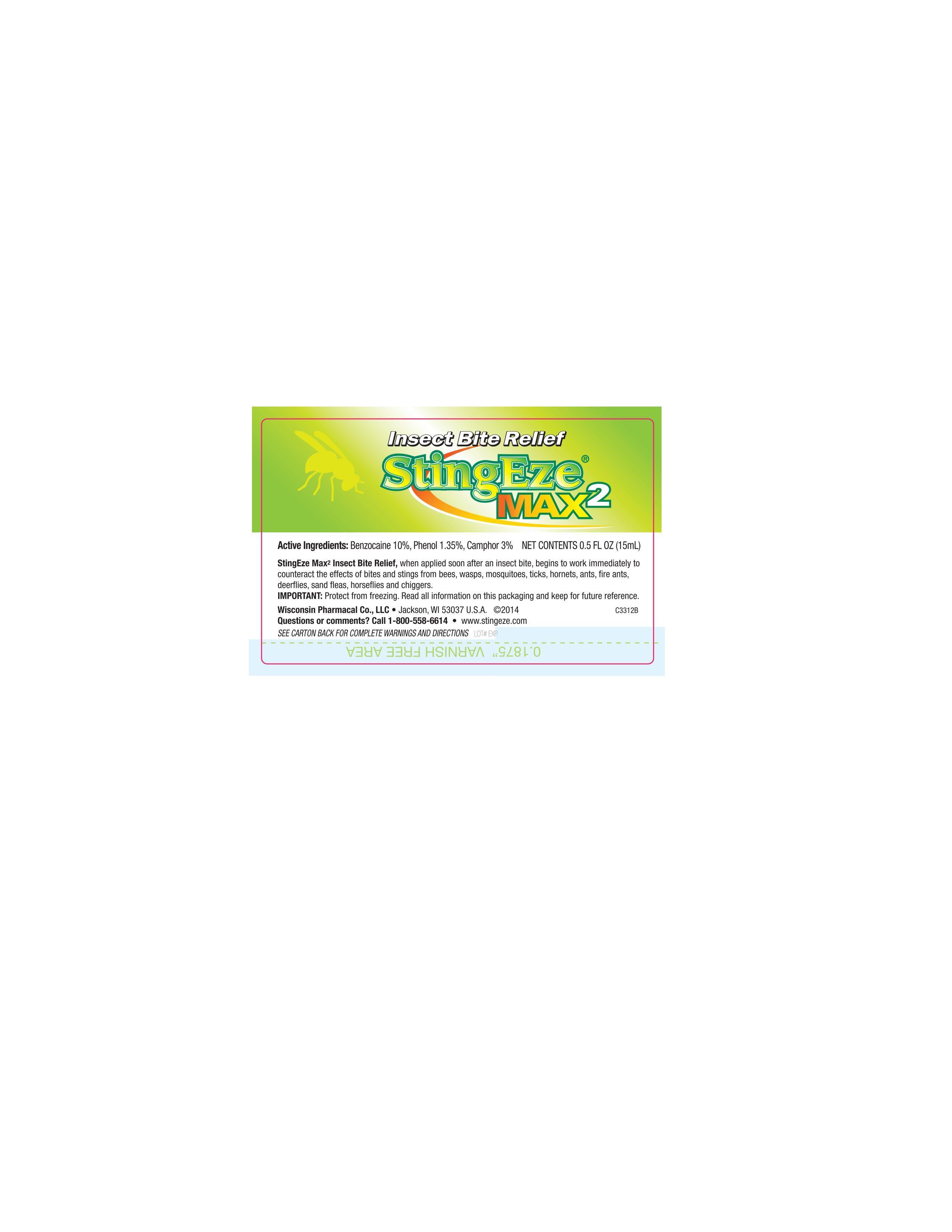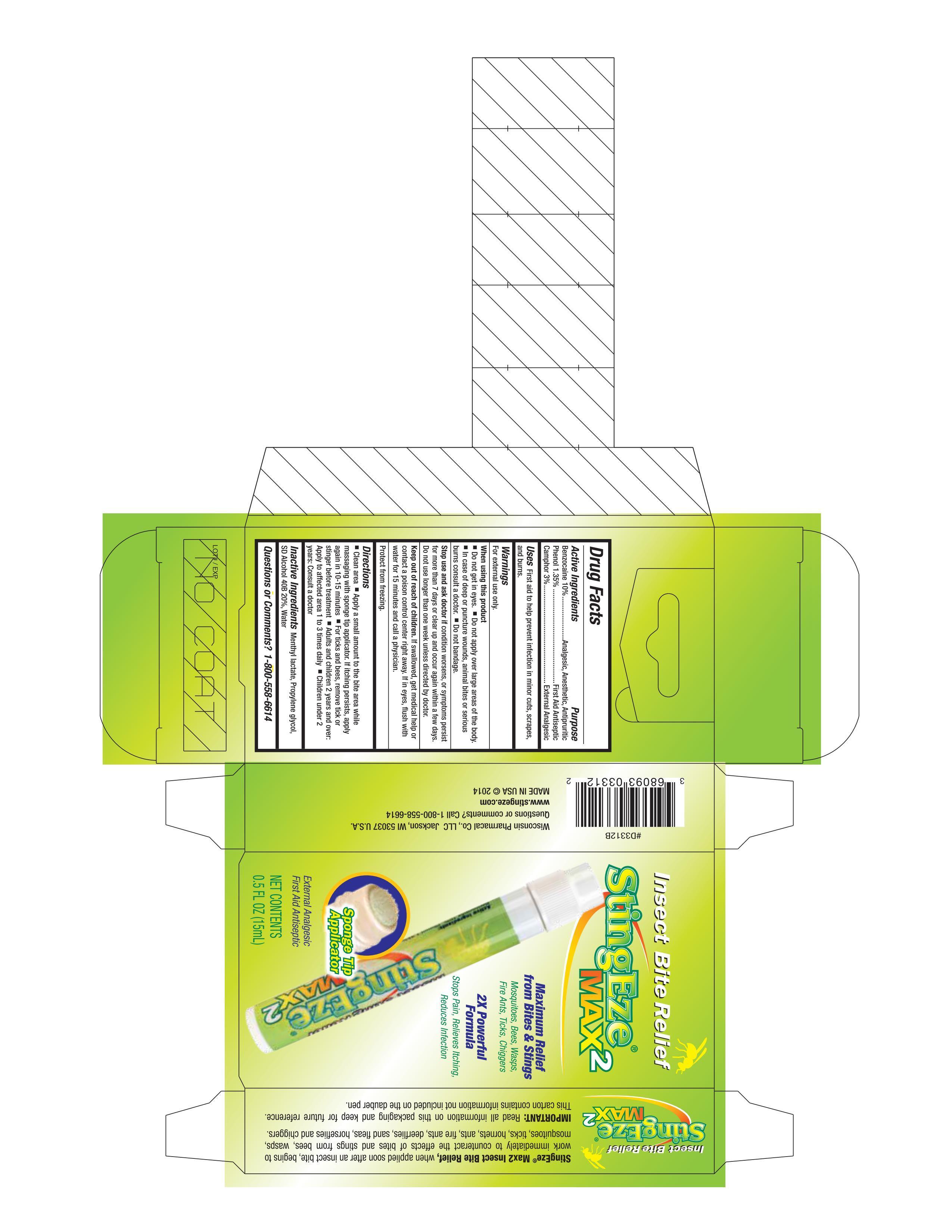Stingeze Max Insect Bite Relief | Benzocaine, Camphor, Phenol Liquid while Breastfeeding

What is Stingeze Max Insect Bite Relief | Benzocaine, Camphor, Phenol Liquid used for?
Brief: Analgesic, Anesthetic, Antipuritic First Aid Antiseptic External Analgesic
Is using Stingeze Max Insect Bite Relief | Benzocaine, Camphor, Phenol Liquid safe or dangerous while breastfeeding?
Stingeze Max Insect Bite Relief | Benzocaine, Camphor, Phenol Liquid Breastfeeding Analsys
Benzocaine while Breastfeeding
SafeCAS Number: 94-09-7
At latest update, relevant published data on excretion into breast milk were not found. Topical anesthetics (intended for dermatological or oral use) when properly used, show limited systemic absorption which is practically nil, with nil or non-significant systemic levels in the plasma and breast milk. Benzocaine may induce appearance of methemoglobinemia and systemic toxicity if absorbed. Avoid use on the breast, otherwise, in case of use on the nipple, let it be done after a feed and wipe it out by thoroughly washing with water before the next feed. Do not apply creams, gels and other products that would contain paraffin (mineral oil) to avoid absorption by the infant since it is a hydrocarbon-derived substance.
Camphor (synthetic) while Breastfeeding
UnsafeCAS Number: 76-22-2

Substance which can be extracted under distillation from the Camphor tree bark. Nowadays it is synthesized from the Turpentine. Used with creams and lotions as local anti-inflammatory agent. There is no proof of effectiveness as decongestant or expectorant when used in inhaled preparations, but as a toxic agent. Camphor is a highly lipophilic substance which is well absorbed by whatever via of administration (skin, inhalation, mouth) that crosses easily the cell membrane. Pharmacokinetic data support the likelihood of excretion into breast milk in a significant amount. Camphor has been shown to be toxic at low dose on infants in whom it may cause headache, vomiting, seizures and coma. It should never be administered by mouth. It is not appropriate its use during breastfeeding, and, in whatever case, it should not be applied on the mother's breast, since severe intoxications be occurred in infants after use of small ingested amounts. Be aware of not using it in the nostrils.
Stingeze Max Insect Bite Relief | Benzocaine, Camphor, Phenol Liquid Breastfeeding Analsys - 2
Benzocaine while Breastfeeding
CAS Number: 94-09-7
Topical benzocaine has not been studied during breastfeeding, but is unlikely to affect her breastfed infant if it is applied away from the breast. Benzocaine should not be applied to the breast or nipple, because the infant may ingest the drug during nursing and it has been associated with severe methemoglobinemia.
What should I do if I am breastfeeding mother and I am already exposed to Stingeze Max Insect Bite Relief | Benzocaine, Camphor, Phenol Liquid?
Not much study has been done on safety of Stingeze Max Insect Bite Relief | Benzocaine, Camphor, Phenol Liquid in breastfeeding and its ingredients. Even we do not have complete information about usage of Stingeze Max Insect Bite Relief | Benzocaine, Camphor, Phenol Liquid in breastfeeding so at this point a trained medical professional could be your best bet. If you observe anything abnormal with your baby please contact 911.
My doctor has prescribed me Stingeze Max Insect Bite Relief | Benzocaine, Camphor, Phenol Liquid, what should I do?
If your doctor considers Stingeze Max Insect Bite Relief | Benzocaine, Camphor, Phenol Liquid safe enough to prescribe for you that means its benefits should outweigh its known risks for you.
If I am using Stingeze Max Insect Bite Relief | Benzocaine, Camphor, Phenol Liquid, will my baby need extra monitoring?
We are not Sure, Please check with your healthcare provider or doctor.
Who can I talk to if I have questions about usage of Stingeze Max Insect Bite Relief | Benzocaine, Camphor, Phenol Liquid in breastfeeding?
US
National Womens Health and Breastfeeding Helpline: 800-994-9662 (TDD 888-220-5446) 9 a.m. and 6 p.m. ET, Monday through Friday
UK
National Breastfeeding Helpline: 0300-100-0212 9.30am to 9.30pm, daily
Association of Breastfeeding Mothers: 0300-330-5453
La Leche League: 0345-120-2918
The Breastfeeding Network supporter line in Bengali and Sylheti: 0300-456-2421
National Childbirth Trust (NCT): 0300-330-0700
Australia
National Breastfeeding Helpline: 1800-686-268 24 hours a day, 7 days a week
Canada
Telehealth Ontario for breastfeeding: 1-866-797-0000 24 hours a day, 7 days a week
